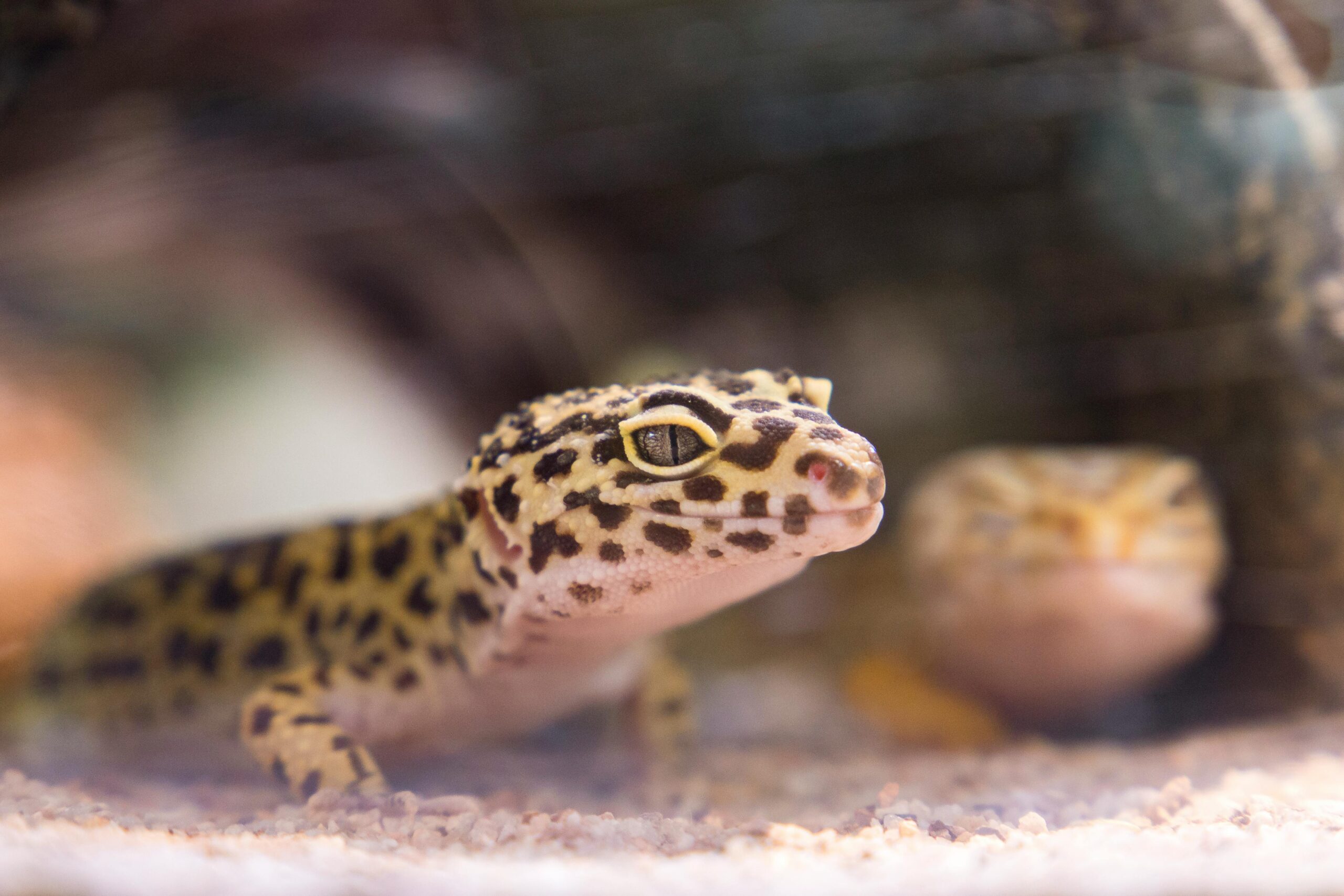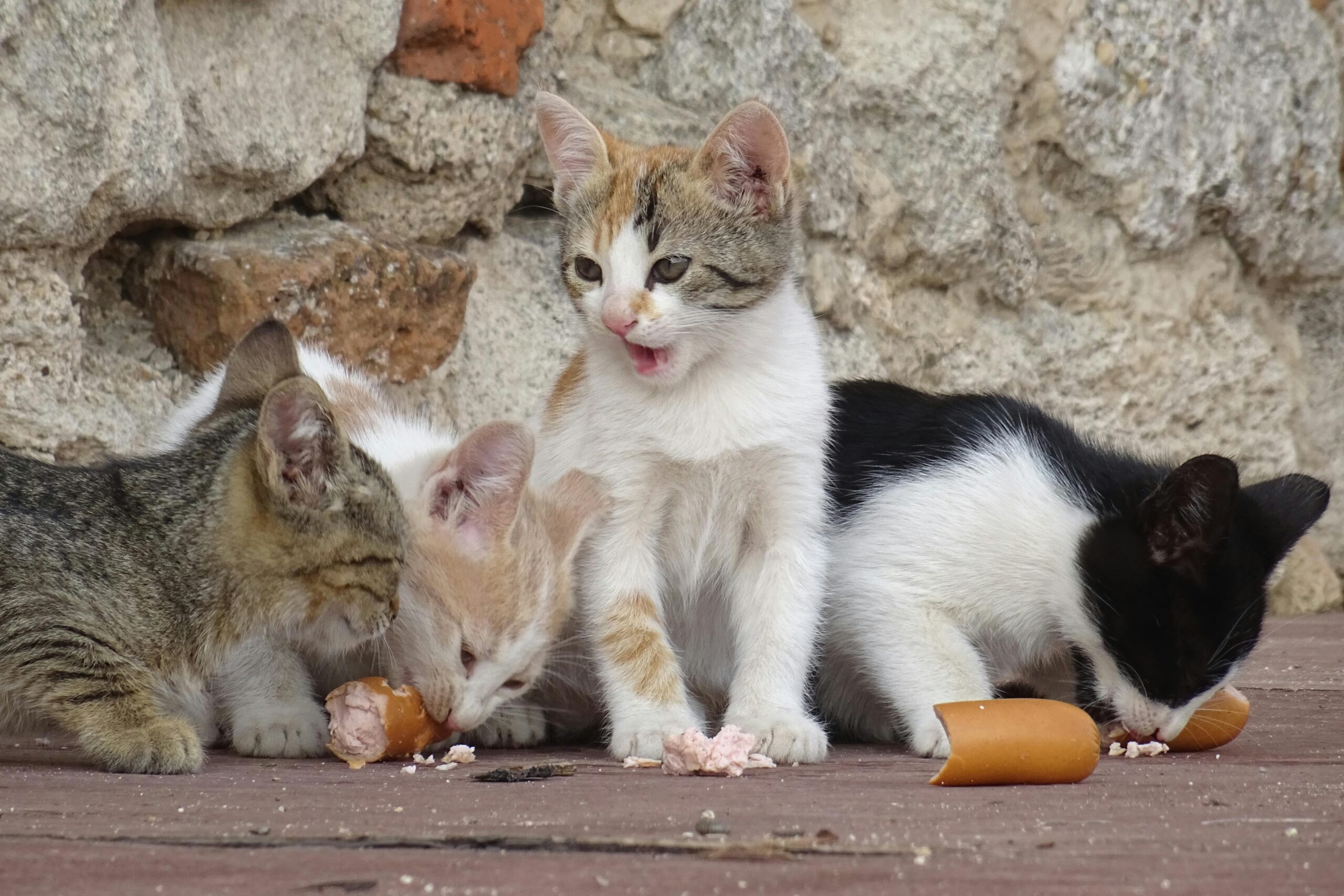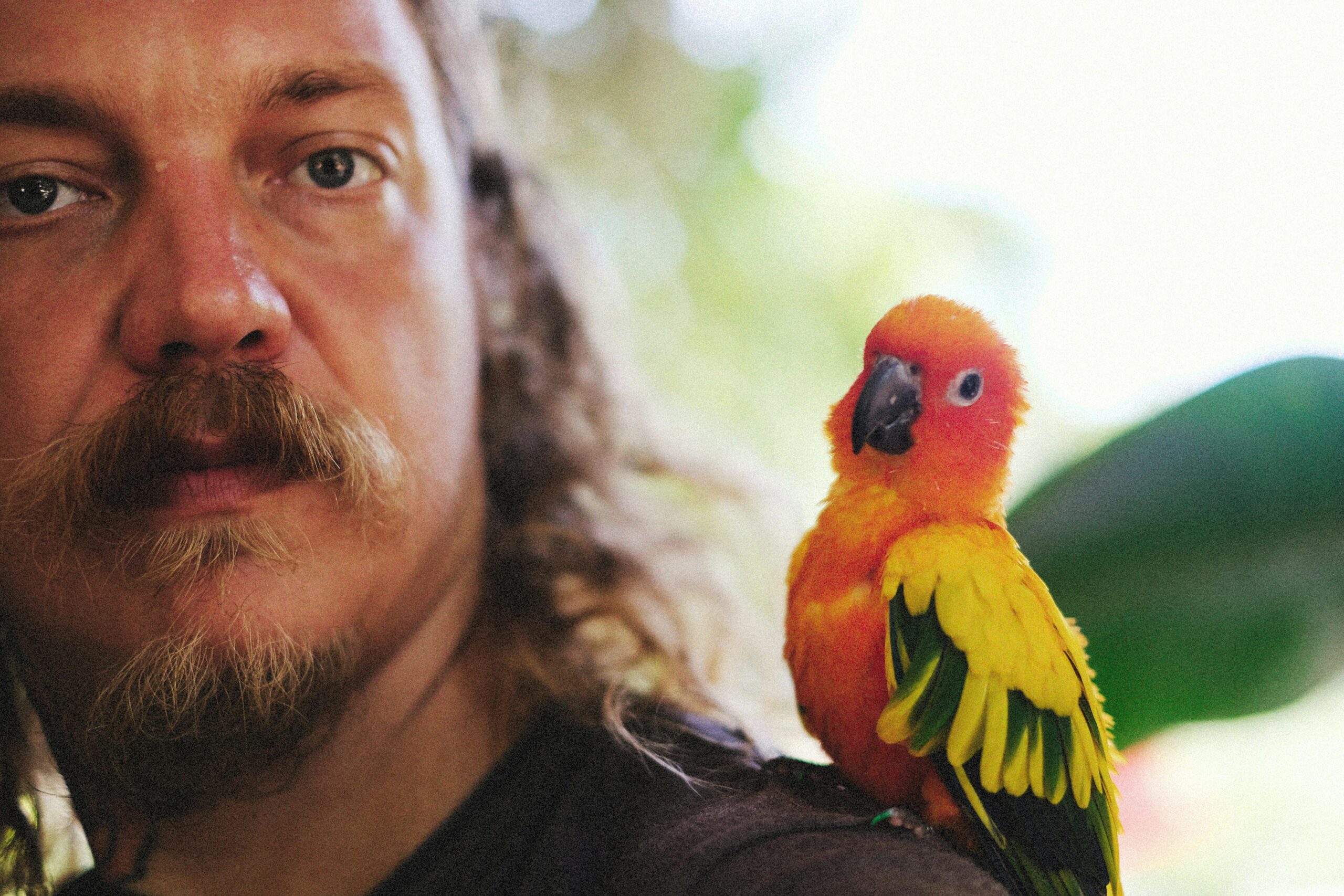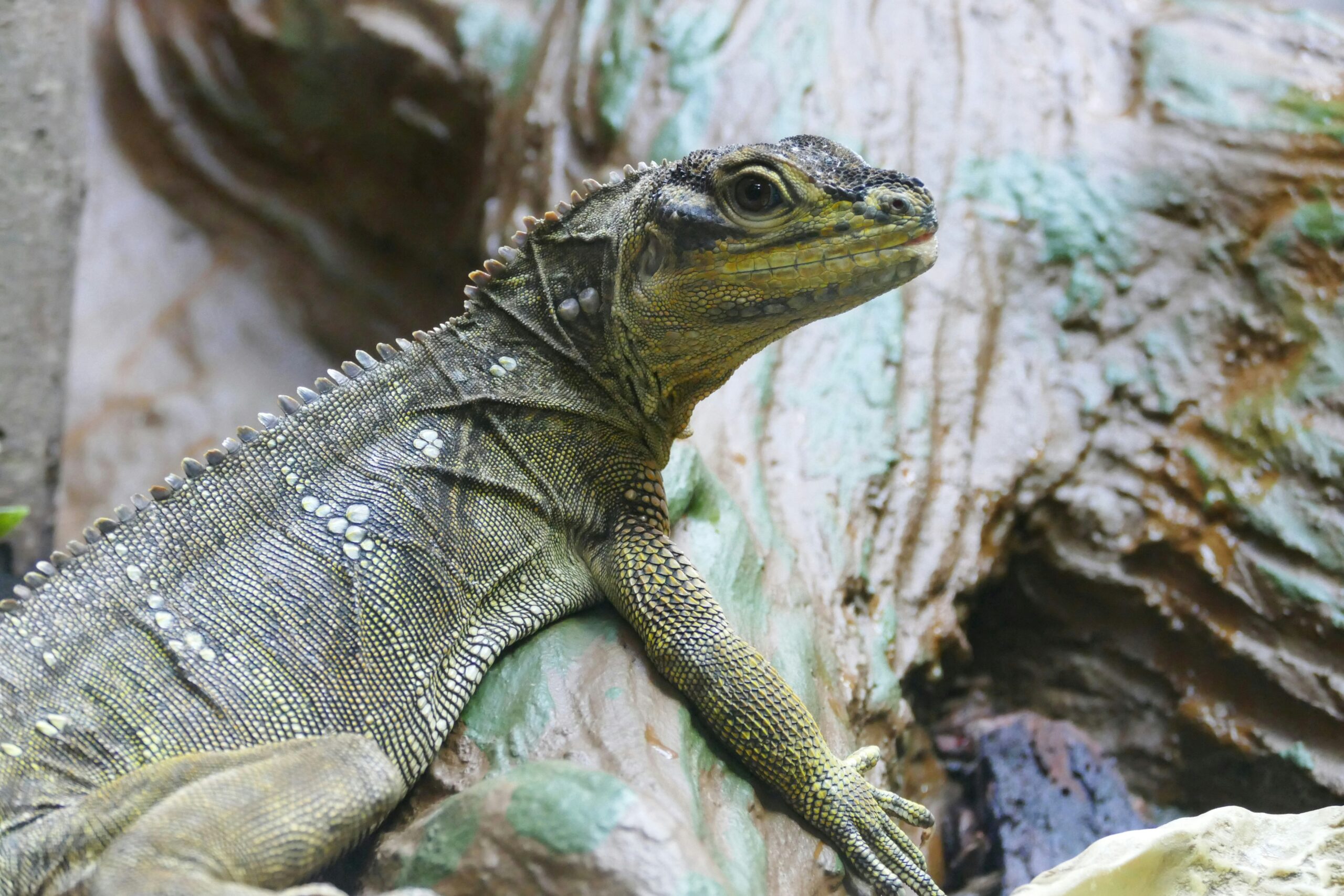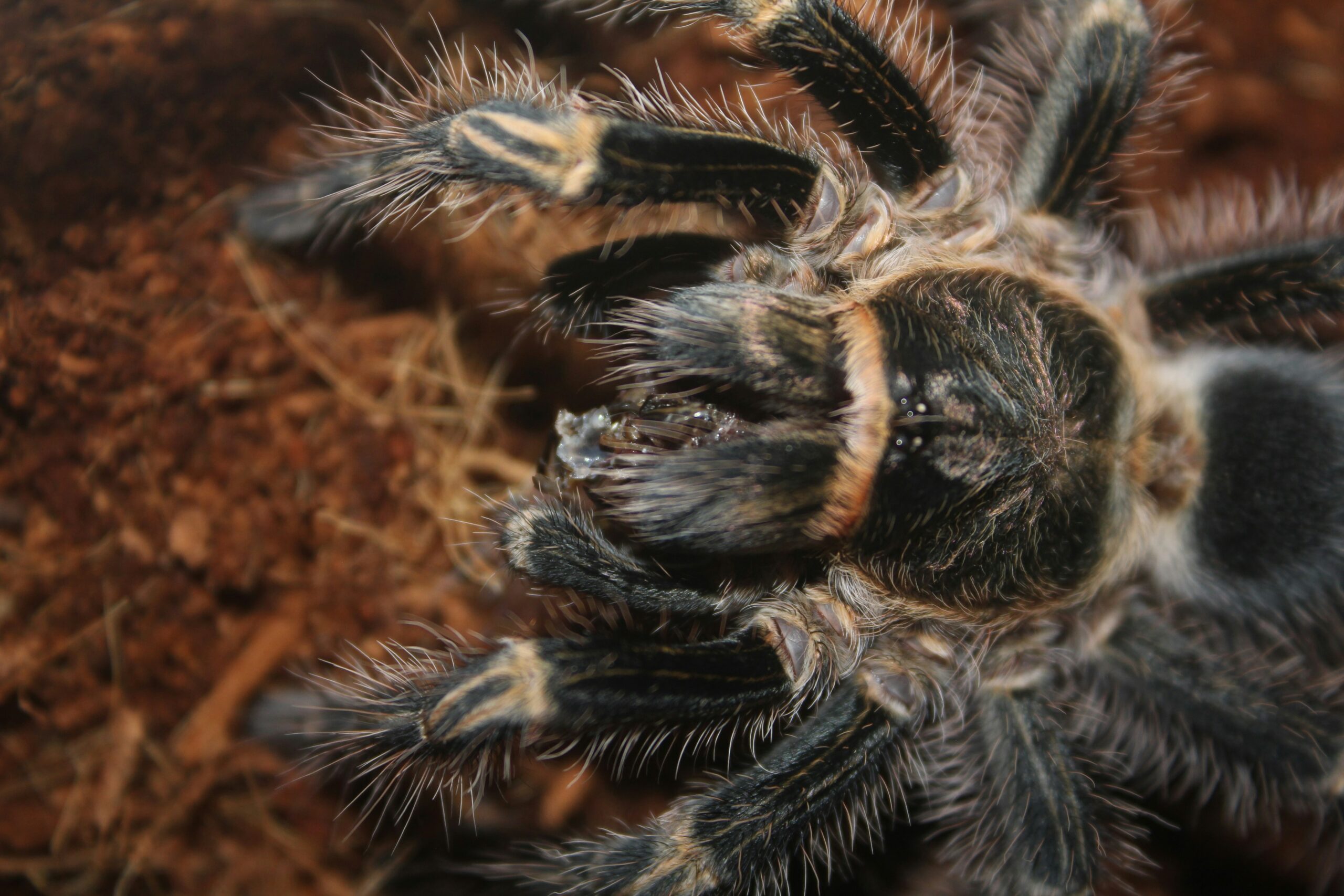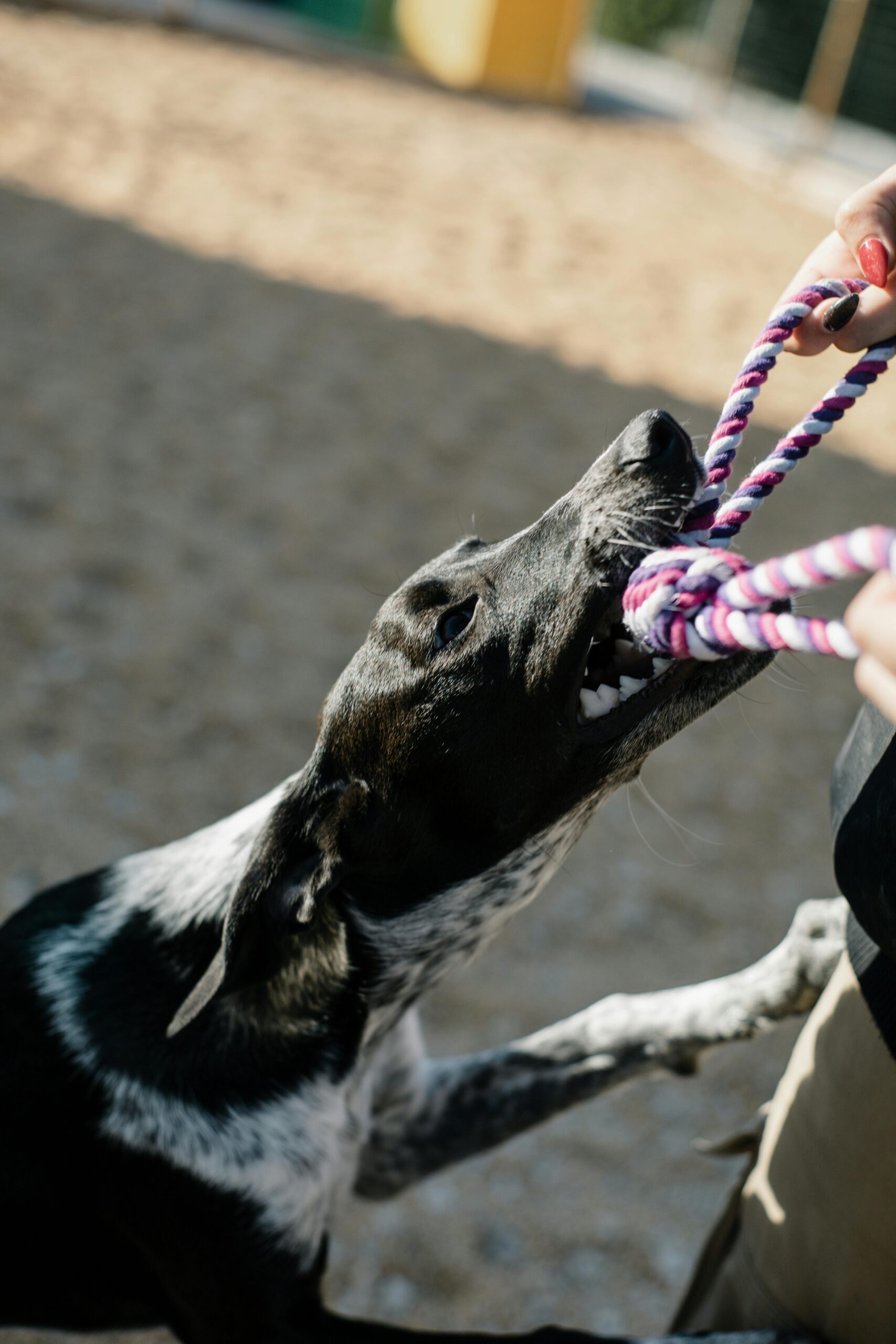Serious Public Safety Risks Associated with Exotic Animals The ownership of exotic animals as pets has become increasingly popular in recent years. Many people are attracted to the novelty and charm of having a unique animal, such as tigers, snakes, primates, or exotic birds. However, keeping these animals in private settings raises serious concerns about public safety. While exotic pets can be captivating, their presence in non-professional environments can result in severe consequences for both the owners and the wider community. Below, we examine the public safety risks linked to exotic animals, focusing on their behavior, potential for disease transmission, environmental impact, and regulatory challenges. 1. Unpredictable Behavior A major safety concern with exotic animals is their unpredictable behavior. Unlike domesticated pets, which have been selectively bred over generations to adapt to human environments, exotic animals maintain their wild instincts. Even when raised in captivity, they can react aggressively when they feel threatened, stressed, or confused. Large predators like lions, tigers, and bears pose significant dangers. Their physical strength and natural instincts can easily overpower even the most experienced handlers. Numerous incidents involving attacks on owners, family members, and visitors illustrate these risks: In 2009, a pet chimpanzee named Travis attacked a woman in Connecticut, resulting in serious injuries. Although he was raised as a companion animal, his strength and aggression became uncontrollable during a moment of stress. In 2011, a public safety crisis unfolded in Zanesville, Ohio, when over 50 exotic animals were released after their owner opened their cages. Local authorities were forced to euthanize most of the animals, including lions, tigers, and bears, to ensure community safety. These incidents demonstrate that no level of training or familiarity can completely eliminate the risk of violent behavior in exotic animals. 2.Zoonotic Diseases Exotic animals can also be carriers of zoonotic diseases—illnesses that can be passed from animals to humans. Many of these diseases are not well-known to the general public or healthcare professionals, which makes them difficult to diagnose and treat. The risks are even greater because exotic animals often need specialized care that many private owners are not prepared to provide. Some significant diseases linked to exotic animals include: Salmonella: Reptiles like turtles, snakes, and lizards frequently harbor salmonella bacteria. Handling these creatures or cleaning their environments without proper hygiene can result in serious gastrointestinal issues for humans. Monkeypox: In 2003, a monkeypox outbreak in the United States was traced back to the importation of Gambian pouched rats. This disease, which is similar to smallpox, led to numerous cases and raised alarms about the dangers of the exotic animal trade. Herpes B Virus: This virus, found in macaque monkeys, can be deadly to humans if transmitted through bites or scratches. Bringing exotic animals into homes raises the risk of disease outbreaks, endangering not just the owners but also their communities and healthcare systems. 3.Escape and Public Threats Escaped exotic animals present a serious threat to public safety. When these creatures are on the loose, they can create panic, cause property damage, and lead to injuries. Predatory animals like large cats or venomous snakes can pose a direct danger to human lives. For instance: In 2015, a cobra escaped from a private residence in Austin, Texas, prompting a citywide alert until the snake was located. In Florida, the Burmese python, an invasive species often kept as a pet, has formed a breeding population in the wild after being released or escaping. These pythons hunt native wildlife and can grow large enough to pose a risk to humans. Recapturing escaped exotic animals often involves significant resources, including the efforts of law enforcement, wildlife specialists, and, in some cases, the use of lethal force. 4.Impact on Emergency Responders Emergency responders, including police officers, firefighters, and paramedics, face distinct challenges when addressing incidents involving exotic animals. During emergencies such as fires, floods, or accidents, these responders may come across animals they are untrained to manage, which heightens the risk of injury. Additionally, responders might not have essential information regarding the specific needs or behaviors of exotic animals. For example, a first responder might not realize that a certain species is venomous or could become aggressive if startled. These uncertainties can hinder rescue operations and pose dangers to both responders and civilians. 5.Environmental Risks The release or escape of exotic animals into the wild can lead to serious environmental issues. Many of these pets are not originally from the areas where they are kept, and their presence can upset local ecosystems. These animals can turn into invasive species, competing with native wildlife for resources and potentially spreading diseases. For instance, in the Florida Everglades, the Burmese python has significantly reduced the populations of native mammals. Likewise, green iguanas, another type of exotic pet, have become invasive in Florida, resulting in harm to both infrastructure and ecosystems. 6.Regulatory and Enforcement Challenges Regulating the ownership of exotic animals presents a complex challenge. Although many states and countries have implemented laws that restrict or prohibit certain exotic pets, the enforcement of these laws is often inconsistent. Loopholes, insufficient resources, and underground markets enable individuals to obtain and keep exotic animals illegally. Even when regulations exist, they may not fully address the associated risks: Licensing and inspection processes can fall short, failing to guarantee that owners possess the necessary knowledge and resources to care for exotic animals in a responsible manner. The black market for exotic animals continues to thrive due to high demand and lenient penalties. Trafficking in exotic animals not only poses risks to public safety but also contributes to the exploitation of wildlife. Educational and Ethical Considerations Many people who buy exotic animals do not fully understand the responsibilities and risks that come with ownership. The allure of having an exotic pet often overshadows important factors like safety, animal welfare, and the long-term commitment required. Educational programs could significantly help in minimizing the public safety risks linked to exotic animals. Additionally, the ethical concerns surrounding the keeping of wild animals as pets warrant
What do exotic pets eat?
Introduction Exotic pets diet Exotic pets eats are a fascinating and varied group of animals that draw in pet owners with their distinct traits and behaviors. This category includes a wide array of species, such as reptiles, amphibians, birds, small mammals, and even certain fish, each with unique dietary requirements that can differ significantly from those of typical domestic pets like dogs and cats. Ensuring proper nutrition is crucial for the care of exotic pets, as it has a direct impact on their health, lifespan, and overall well-being. Given the diversity among these animals, their food needs can vary greatly, so it’s essential for owners to be knowledgeable about their pets’ specific requirements to provide a suitable and balanced diet. In this article, we will examine the dietary needs of several common exotic pets, with a focus on reptiles, birds, amphibians, small mammals, and fish. We will also look into the different types of foods that are appropriate for these animals, including live food, plants, and specially formulated diets. Lastly, we will discuss some general principles of exotic pet nutrition, such as the significance of variety, the use of supplements, and food safety. 1.Reptiles Reptiles are among the most sought-after exotic pets, with turtles, lizards, and snakes being popular choices for many households. Their dietary needs can vary widely depending on their species, age, and whether they are herbivores, carnivores, or omnivores. 1. Herbivorous Reptiles (e.g., Iguanas, Tortoises) Herbivorous reptiles, like green iguanas and certain tortoise species, mainly eat plant-based foods. Their diet should include a diverse range of leafy greens, vegetables, and some fruits. Common food options for these reptiles are: Leafy Greens: Collard greens, dandelion greens, mustard greens, and kale are all excellent sources of essential vitamins and minerals. Vegetables: Squash, bell peppers, carrots, and sweet potatoes offer a variety of important nutrients. Fruits: Fruits such as papaya, mango, and berries can be given as occasional treats, but they should not make up a large part of their diet due to their high sugar content. Herbs: Fresh herbs like basil, parsley, and cilantro can enhance the flavor and variety of their meals. It’s crucial to avoid feeding herbivorous reptiles iceberg lettuce, which has little nutritional value, and to steer clear of foods high in oxalates, like spinach and beet greens, as these can hinder calcium absorption. 2.Carnivorous Reptiles (e.g., Snakes, Certain Lizards) Carnivorous reptiles, including snakes and some lizards like monitors, mainly consume animal-based foods. These reptiles are opportunistic hunters, and their diet typically consists of small mammals, birds, eggs, and insects. Frozen or Live Prey: Common food items for these reptiles include mice, rats, rabbits, chicks, and fish. Depending on the species, they may be fed live or frozen-thawed prey. Insects: Reptiles that eat insects, such as certain geckos, may enjoy crickets, mealworms, roaches, and other bugs. These insects can be dusted with calcium and multivitamin supplements to ensure they receive proper nutrition. Eggs: Some carnivorous reptiles also consume eggs, which can be a part of their natural diet. It’s crucial that the size of the prey is appropriate for the reptile to prevent choking or injury. 3.Omnivorous Reptiles (e.g., Bearded Dragons, Box Turtles) Omnivorous reptiles, like bearded dragons and box turtles, need a varied diet that includes both plant and animal matter. Insects: Crickets, mealworms, waxworms, and roaches are commonly used as sources of animal protein. Vegetables and Greens: Leafy greens, squash, and other vegetables are vital for these omnivores. Fruits: Certain fruits, such as blueberries, papaya, and strawberries, can be offered in moderation, but they should not dominate their diet. Feeding Guidelines for Reptiles When it comes to feeding reptiles, both the type of food and the feeding schedule are crucial. Juvenile reptiles often require more frequent feedings compared to adults, and the portion sizes should be suitable for the reptile’s size and age. It’s important to provide a well-rounded diet with the right supplements, like calcium and vitamin D3, to help prevent metabolic bone disease, which is a common health concern in reptiles. 2.Birds Birds, particularly exotic species such as parrots, cockatiels, and macaws, are known for their intelligence and social nature. Their diets are quite varied and can include seeds, pellets, fruits, vegetables, and even nuts.Exotic birds such as parrots, macaws, cockatiels, and canaries have different dietary requirements based on their species. Parrots and Other Psittacines Diet Pelleted bird food should be the main component. Fresh fruits (like apples, bananas, and berries) and vegetables (such as carrots, broccoli, and peppers) are essential. Nuts and seeds should be given in moderation (for example, almonds and sunflower seeds). Feeding tips Steer clear of toxic foods, including avocado, chocolate, and caffeine. Offer a variety of foods to keep them engaged and to avoid nutritional deficiencies. Finches and Canaries Diet Use seed mixtures specifically formulated for finches or canaries. Fresh greens, including spinach and lettuce, are important. Boiled eggs can be provided for additional protein during breeding. Feeding tips Include cuttlebones to supply calcium. Regularly clean food and water dishes to avoid contamination. 2. Amphibians Amphibians, such as frogs, salamanders, and axolotls, primarily have a carnivorous diet, although some species may eat algae or plant material during their larval stages. Dietary Prefrences Insects: Crickets, roaches, and mealworms. Aquatic Prey: Bloodworms, brine shrimp, and small fish. Specialized Foods: Commercial amphibian pellets or gel diets. Feeding Tips: Amphibians depend on live prey because of their natural hunting instincts. Ensure a clean, moist environment to promote feeding. Avoid offering large prey that could lead to choking hazards. 4. Small Exotic Mammals Small mammals such as hedgehogs, sugar gliders, and ferrets have specific dietary requirements. Hedgehogs Diet: High-quality, low-fat cat food as a primary food source. Insects like crickets, mealworms, and waxworms. Small portions of fruits (like apples and berries) and vegetables (such as carrots and green beans). Feeding Tips: Steer clear of fatty or sugary foods, as hedgehogs can easily become obese. Ensure fresh water is available at all times. Sugar Gliders Diet: Nectar or specially formulated sugar glider
2.Why Do Animals Go Crazy for Food?
Introduction The facts and behavior of animals “go crazy” for food is something we often see in both wild and domestic settings. Whether it’s a predator stalking its prey, a dog eagerly devouring its meal, or a bird frantically pecking at seeds, animals display a variety of behaviors that can appear extreme or highly enthusiastic when it comes to food. This “crazy” reaction can be understood through a mix of biological, psychological, and ecological factors. Let’s explore several reasons why animals show such seemingly frenzied or intense behavior around food. 1. The Role of Hunger and Energy Needs The main reason animals go crazy for food is that it serves as a vital source of energy. Every living organism needs energy to survive, and most animals depend on external sources—other organisms or plants—to meet their energy needs. This energy fuels various biological processes, including movement, reproduction, thermoregulation, and cellular maintenance. When an animal feels hungry, it sends signals to the body indicating a need for food. In many animals, the brain is finely tuned to these hunger signals, and the release of hormones like ghrelin creates strong urges to eat. The feeling of hunger is particularly intense because the body must maintain a balanced energy supply to support essential functions. For example, predators that hunt for their meals have evolved to experience heightened hunger signals after extended periods of searching. This drives them to stay focused on tracking and capturing prey. Similarly, herbivores often need to cover large areas to find enough plant material. Whether it’s a lion pursuing a gazelle or a squirrel searching for nuts, the intensity of an animal’s food-seeking behavior is closely linked to its immediate need for energy replenishment. In some instances, especially when animals have gone without food for a long time, their hunger can become so overwhelming that it appears as if they are “going crazy” when food finally becomes available. 2.Survival Instincts and Resource Scarcity In the wild, food can be a rare and unpredictable resource. Many animals experience varying access to food, particularly in tough environments or during seasonal shifts. For instance, some animals need to store food when it’s plentiful to get through lean times. Squirrels collect acorns to survive the winter, while bears consume large amounts of food before hibernation. In these situations, animals develop behaviors that show a sense of urgency to gather resources before they become limited again. Predators and prey respond differently to food availability, influenced by the risks involved. A predator like a lion, after a successful hunt, may eat quickly and greedily, trying to consume as much as possible before scavengers or other predators arrive to take the kill. Likewise, herbivores may graze heavily when they discover a rich patch of vegetation to stock up on calories. This behavior stems from the understanding that once the food is gone, there may not be another meal for a while. Opportunistic feeders—like rats, crows, and raccoons—often display seemingly erratic behavior around food because they are instinctively driven to take advantage of any available food source. In these cases, animals are motivated by survival instincts that compel them to seize food whenever it appears, fully aware that they cannot afford to let an opportunity slip away. 3. Evolutionary Adaptation and Feeding Behavior Over millions of years, animals have developed specific feeding behaviors that enhance their chances of survival and reproduction. These behaviors often represent adaptations to the challenges posed by their environments. In some species, competition for food can be fierce, and the ability to quickly consume available food can be crucial for survival. Take scavengers like vultures, for instance; they have evolved a feeding frenzy behavior. When they discover a carcass, they may start feeding aggressively to secure their portion of the meal before other animals can take it. While this may appear chaotic, it is actually a survival tactic that boosts their chances of getting enough food to thrive. Likewise, many animals possess specialized adaptations for locating and utilizing food. Carnivores such as hawks and sharks have sharp senses of sight and smell that enable them to spot prey from considerable distances. In contrast, herbivores might depend on heightened senses of taste or smell to find the most nutritious plants. In both scenarios, once food is found, these animals often exhibit intense focus and behavior as they prepare to catch or eat it. Prey animals, like rabbits or deer, also show behaviors that may seem frantic when food is limited or when they sense predators nearby. These animals tend to be highly alert to potential threats and will quickly eat when they have a safe chance, driven by the need to replenish their energy while remaining watchful for danger. 4.Psychological Factors and Reward Systems Animals, much like humans, possess intricate brains that manage not only their physical needs, such as hunger, but also psychological elements that shape their behavior. A key component of this is the brain’s reward system, which is closely linked to the release of neurotransmitters like dopamine and serotonin. These chemicals play a significant role in feelings of pleasure, motivation, and the reinforcement of behaviors. When animals eat, particularly when they indulge in foods that are high in calories or nutrients, their brains respond by providing a pleasurable sensation. This enjoyment acts as positive reinforcement, prompting the animal to repeat the behavior in the future. The mere anticipation of a food reward can lead an animal to display heightened excitement or energy, sometimes resulting in what might seem like “crazy” behavior around food. Take dogs, for instance; they often become overly excited when food is presented, largely due to their learned connection between food and reward. They might wag their tails, jump, or bark with enthusiasm because they link food with pleasurable experiences and positive reinforcement. This behavior goes beyond just quenching hunger; it also encompasses the mental satisfaction derived from eating. In some animals, particularly those with strong social structures or hierarchies, access to food can be influenced by dominance
How can I train my parrot to talk?
Train my pet parrot to talk is a rewarding experience that can enhance the bond between you and your feathered companion. Parrots are known for their ability to mimic human speech, but teaching them to talk requires patience, consistency, and understanding of their behavior. Not all parrots will learn to talk, and the ones that do may develop at different rates, but by using the right techniques and creating an engaging environment, you can maximize your chances of success. Below is a detailed guide, presented in points, on how to train your parrot to talk. 1. Understanding Your Parrot’s Species and Capabilities Before starting training, it’s essential to understand your parrot’s species, as not all train my parrot to talk have the same capacity for speech. Some parrots are naturally better talkers than others. Knowing your parrot’s natural capabilities will help you set realistic expectations. 2. Building a Strong Bond with Your Parrot Before starting formal speech training, it’s important to develop a strong bond with your parrot. train my parrot to talk are social creatures and respond better to someone they trust and feel comfortable with. 3. Creating a Stimulating Environment Parrots thrive in environments that provide them with mental stimulation. A bored or stressed parrot is unlikely to learn new behaviors, including speech. 4. Choosing the Right Words When training your parrot to talk, it’s essential to start with words that are easy for them to mimic. Short, simple words with clear sounds are best for beginners. 5. Using Positive Reinforcement Positive reinforcement is key when training any animal, including parrots. Rewarding your parrot for good behavior encourages them to repeat that behavior. 6. Repetition and Consistency Training a parrot to talk requires repetition and consistency. Without regular practice, your parrot is less likely to retain what they’ve learned. 7. Incorporating Visual and Contextual Cues Parrots often learn to associate certain words with actions or objects, and this contextual learning can enhance their ability to talk. 8. Avoiding Negative Reinforcement While positive reinforcement is important, it’s equally important to avoid negative reinforcement, which can discourage your parrot from learning to talk. 9. Using Technology to Support Learning Modern technology can supplement your efforts in training your parrot to talk. 10. Encouraging Natural Vocalization Parrots often vocalize on their own, and encouraging these natural sounds can be a stepping stone to speech. 11. Understanding and Working with Your Parrot’s Unique Personality Each parrot has a unique personality, and understanding their quirks and preferences can help you tailor your training approach. 12. Ensuring Proper Care and Health A healthy parrot is more likely to be a happy and talkative parrot. Ensuring your bird’s physical and emotional well-being is key to successful training.
Which exotic pets do people tend to keep as pets, and why do they prefer them?
Collecting exotic pets resembles a colorful and appealing mosaic, calling those with an eye for animals seeking friendships away from the norm of cats and dogs. Even though the definition of ‘exotic’ may vary, it generally includes species that are not typical as pets, and nearly always originate from different ecosystems or areas. Here’s a detailed exploration of a number of the most sought-after exotic pets along with the reasons people choose them. 1. Capybaras Overview Capybaras (Hydrochoerus hydrochaeris), the world’s greatest rodents, are Indigenous to South America. These social beings, at their most substantial, hit about 150 pounds and are commonly found at freshwater locations, which makes them semiaquatic. Exotic pet owners are choosing them more and more because of their gentle personality and warm interactions. Reasons for Popularity Social Nature: Found naturally, capybaras reveal that they are, essentially, social animals, tending to congregate in groups of 10 to 20. In family environments, this societal pattern succeeds by developing potent bonds with their human keepers and works well alongside other species. Affectionate Behavior: According to owners, capybaras respond to affection and like it when people pet them. Thanks to their accumulated personality, they suit families with children by offering an exceptional pet experience. Unique Appearance: The expansive measurements and special design of their looks can be, quite frankly, very engaging. A lot of individuals are attracted to their unorthodox looks, which makes them rare among more frequent pets. 2. Fennec Foxes Overview The fennec fox is the smallest in its family, the Vulpes zerda, and is native to the Sahara Desert. Thanks to their large ears and their joyful aura, they are at the moment a stylish selection for fans of exotic pets. Reasons for Popularity Playful Personality: Fennec foxes enjoy recognition for their energetic and interested nature. They usually facilitate a lot of interactivity and commonly support activities that contribute to their lively participation. Unique Characteristics: The remarkable visual quality of these items is attributed to their elaborate ears, notably their large size. They are regularly judged to be “cute” and have grown popular on social media. Bonding Potential: According to the research conducted, the fennec fox builds robust ties with their caretakers and reflects canine-like behavior. The capability for connection makes them attractive as household pets. 3. Sugar Gliders Overview Sugar gliders (Petaurus breviceps) are little, nighttime marsupials indigenous to Australia and New Guinea. Both the knack for gliding through the air and their social tendencies have boosted their rising popularity as pets. Reasons for Popularity Social Animals: Because they are extremely social, sugar gliders tend to thrive when they are housed with others. Their lighthearted behavior is very entertaining, rendering them excellent friends. Minimal Space Requirement: Thanks to their small space requirements, these animals are the best for people who live in apartments. Unique Features: We see value in them because they can soar and show attractive characteristics. There’s a tendency for people to view them as exceptional and stimulating, which attracts animal lovers interested in something novel. 4. Hedgehogs Overview Small, spiny mammals called hedgehogs have risen in popularity as pets in the last few years. When they sense threat, they create a ball of themselves, unique to their situation. Reasons for Popularity Low Maintenance: Hedgehogs are apparently less troublesome as pets in comparison to dogs and cats. They can flourish in smaller living spaces and need just a basic diet. Adorable Appearance: The attractive combination of their sharp outwards appearance and a lovely face wins over many. Their special appearance typically succeeds in attracting people. Independent Nature: The independence shown by hedgehogs makes them great partners for busy people as well as for families. 5. Tarantulas Overview Tarantulas are substantial spiders that have attracted many with their size and wonderful looks. There are numerous species, all of which show different attributes. Reasons for Popularity Low Care Requirements: In regard to traditional pets, tarantulas need little maintenance. The charms of equine companions become especially attractive to people with active schedules, mainly because they don’t require exercise or grooming every day. Fascinating Behavior: A considerable number of fans appreciate catching their tarantulas at work, whether it be feeding or making a web. This serves as a fun and educational source. Educational Value: The process of caring for a tarantula increases educational insight into arachnids, which then increases public consciousness of their behavior and biology. 6. Snakes Overview A range of snake species, including ball pythons and corn snakes, has become a fad in the exotic pet market. What draws interest is their functional design and exclusive looks. Reasons for Popularity Variety of Species: There are multiple snake varieties to choose from with differing colors, patterns, and sizes to meet everyone’s needs within the pet community.An expertly overseen terrarium creates a perfect ecosystem that makes them suitable for city residents. Low Allergy Risk: People who suffer from allergies to animals with fur may find snakes to be an option because they don’t shed their fur. 7. Miniature Donkeys Overview Miniature donkeys are small, good-natured animals that have risen in prominence in country and suburban locales. Their reputation lies in being gentle and social. Reasons for Popularity Companionship: Miniature donkeys are animals that flourish with the presence of other animals. Wildlife can find them useful as well as humans. Adorable Size: What families seek in a unique pet experience is what makes their small build and gentle attitude appealing. Low Maintenance: Small though they are, miniature donkeys have easy care requirements and can beautifully enrich a homestead or farm. 8. Kinkajous Overview Living in the rainforest, kinkajous (Potos flavus) are distinguishing mammals celebrated for their keen enthusiasm for play and their keen interest in novel ideas. Regularly called “honey bears,” this relates to their fondness for foods that are sweet. Reasons for Popularity Playful Behavior: The fact that they are very playful animals makes sure Kinkajous offer both entertainment and companionship. Unique Diet: They have contrasting dietary demands, commonly doing well on fruits and honey, which makes
How do the temperaments of fennec foxes compare with domestic cats?
Behavioral, social interaction, and care needs how temperaments of fennec foxes compare with domestic cats differences in domestic cats and fennec foxes represent a useful model. In any event, both types are wonderful associates, but the substantial variances in their histories thoroughly affect their relationship and interaction with their human protectors. Overview of Domestic Cats History and Social Structure Datable to nearly 9,000 years ago, the relationship between temperaments of fennec foxes compare with domestic cats (Felis catus) and human civilization is thought to have happened in the Near East. Farming cultures have respected their hunting abilities ever since, which supports the control of rodents. Acknowledged for many years as symbols of aesthetic beauty and independence, they have evolved into valued acquaintances. Since cats hunt alone, that largely affects their behavior. On the field, they commonly appear more territorial, putting forward their own areas for their hunt for both food and habitat. This independent nature can lead to a less-is-more attitude compared to social animals, but a great many cats also reveal affection and interactions that show bonding with their human caregivers. They respect actions that are in line with their personality; they absorb sunlight or inspect the house at their own unhurried pace. To busy individuals or families, the appeal of autonomy may be strong. Curiosity: Curiosity is a natural trait for cats. Those who participate are clearly enthusiastic about discovering their environment by investigating novel topics and participating in enjoyable activities. This curiosity along with a craving for increased mental stimulation usually requires interactive toys and a quality playtime to finish the experience. Affectionate Behaviors: Many cats, while they can stand on their own, love having human interaction and will look for affection. Beside their bodies, they could sway, touch their legs, or even nestle into their laps. All cats are different in their individual personalities; a few are more outgoing than the rest. Territoriality: Cats are quite capable of being territorial. Scratching and scent marking, along with other actions, seem to be their routine means of deepening their territory. The arrival of a new pet could provoke either stress or anger in its environment. Vocalization: Cats generate sounds in order to relate to people and to other animals. The combination of low purring and high meowing conveys a variety of feelings, for example, contentment, a longing for food, or being in a situations that are uncomfortable. Overview of Fennec Foxes History and Social Structure The smallest fox genus member, the fennec fox (Vulpes zerda), is a natural resident of the Sahara Desert. Their alluring faces, described by large ears and a small stature, make them notably attractive as unusual pets. Due to a lack of equal domestication history to that of cats, fennec foxes generally maintain behaviors and characteristics as those of their wild ancestors. Found in the wild, fennec foxes usually comport themselves as family living together. Their social organization strongly affects their behavior and relations with people. Temperament Traits Social Nature: Fennec foxes are, by their own nature, gregarious. They depend on relationship with their family members, consequently, relying on interaction with their human caregivers too. They have a reputation for building powerful relationships with their owners and may show a lot of affection. Playfulness: The foxes are very energetic, often playful. It takes a great deal of stimulation and exercise to keep them satisfied. Regardless of whether toys are involved or they’re just playing in a safe, closed area, fennec foxes love interactive play sharply. Curiosity and Exploration: Like their feline kin, fennec foxes show curiosity. They find a great deal of joy in watching their community, checking out new products, and occasionally making a ruckus. If this interest does not get the supervision it needs, it may create problems in the household. Vocalization: Fennec foxes use varied sounds to communicate, just as they are vocal animals. They use barking and whining like sounds to reflect their emotional state. Sometimes, their vocalizations can vary quite a bit from those of cats, often reminiscent of a dog’s sounds. Territorial Behaviors: When sensing an unwelcome invasion of their territory, fennec foxes engage in territorial behavior. In any case, they might show a lesser degree of territorial behavior than domestic cats, because their social organization usually advances a more communal way of living. Important Variations in Temperament 1. Independence when pitted against Social Dependency There is a marked variation in the degree of independence observed between domestic cats and fennec foxes. Keeping themselves amused for a while without specific engagement, is now possible for them. Those with an active way of life are drawn to this independence. Unlike many species, fennec foxes flourish due to their social interaction. They play an expanded part in their interplay and stimulation. Ignoring them for a protracted time can make them either anxious or aggressive. On account of this quality, they are compatible with those owners willing to invest a lot of time in their care and social involvement. 2. Affection and Bonding Even though both groups easily connect with their human companions, their conceptions of love differ quite a bit from one another. Domestic cats display love on their own conditions. When expressing their love, they often pat against you or rest on your lap, but they can equally be happy with some distance.Fennec foxes, on the contrary, generally have bold displays of affection. The opportunities for increasing could include hugging, licking, or shadowing their owners in how their behavior develops. Due to their social style, they regularly make searches for friendship and usually communicate more openly their desire for connection.
What issues do people encounter when attempting to keep a tarantula pet?
Although, raising attempting to keep a tarantula pet can be a stimulating and rewarding activity, it nonetheless introduces specific trouble. Those wanting to raise tarantulas must be ready to manage their care needs, personal characteristics, and habitats. In this study, we will throughly examine the different issues confronted by people who want to care for tarantulas as pets. Learning about Tarantula Character and Its Actions attempting to keep a tarantula pet for behavioral characteristics are one of the initial challenges pet owners face. In opposition to regular pets, dogs and cats, tarantulas do not exhibit social characteristics of their own. They are singular animals and do not wish to interact with human beings. As a result, while some might think companionship or playfulness is forthcoming, they will quickly learn that tarantulas are mostly reclusive. Handling and Interaction While a number of tarantula fanciers handle their pets with pleasure, it’s important to acknowledge that a lot of species can be jittery or aggressive. A potential defensive bite—though seldom risky to people—can be a major issue. This leads to two main challenges: Limited Interaction: Owners might regret the little engagement they see. Tarantulas differ from other interactive pets, mostly because they commonly spend a high percentage of their time either lurking or making tunnels. Someone searching for a spirited pet can feel let down by this. Handling Risks: Those committed to managing their tarantulas need to ensure there is careful control of the risks to both the pet and the owner. An impact from a falling tarantula may cause the creature to suffer injuries, and even while bites are infrequent, they can frighten and cause anxiety in both the pet’s caretaker and the animal itself. Building an Appropriate Environment Finding the right surroundings for a tarantula is another difficulty. The specific habitat needs of tarantulas vary between species; a misstep in these requirements can cause either stress or health problems. Temperature and Humidity To remain healthy, tarantulas need exact levels of temperature and humidity that require ongoing maintenance. Temperature: Characteristic success for tarantulas is often in environments that are warm, generally lying between 75°F and 85°F (24°C and 29°C). In order to keep this temperature constant, it is the owners’ responsibility, probably involving specific heating machinery—especially in chillier areas. Humidity: A number of species have a particular requirement for humidity levels. A few may need high humidity, but others tend to do better in a more arid atmosphere. An insufficient amount of correct humidity can lead to a host of problems, including issues with moulting, dehydration, or potentially fungal infections. Enclosure Setup The enclosure itself must be appropriately sized and equipped with the right substrates and decorations: Substrate: The substrate has to resemble the natural habitat of the tarantula. As a case in point, burrowing species need a deep substrate for excavation, but arboreal species need climbing space that is vertical. Hiding Spots: Being hunted in their native habitats, tarantulas depend on places to take refuge. The welfare of the people greatly depends on the availability of hiding places, which could be either caves or plants generated by humans. Ventilation: An adequate supply of fresh air is important to stop mold and bacteria development. It is important for owners that their enclosure encourages adequate airflow, which may lead to challenges based on the design. Feeding and Nutrition Feeding a tarantula can seem straightforward, but it comes with its own challenges: Diet Selection For their health, a diverse diet is important because Tarantulas often consume insects. Live Prey: Owners who are uneasy about working with live insects may find it hard to feed most tarantulas, which require them as food. Also, it can be tricky to get hold of healthy, live prey on occasion. Feeding Frequency: The feeding frequencies experienced amongst various species may make it a lesson when figuring out how to feed your tarantula. Overfeeding can lead to obesity very much like underfeeding may produce malnutrition. Observing Feeding Behavior Sometimes, tarantulas exhibit tendency toward being finicky eaters. During molting, a few might experience fasting periods. Recent owners may find this troubling as they might wrongly think a lack of eating is a health issue. Understanding how the tarantula operates and detecting its usual times of fasting is critically important. Molting and Health Concerns Molting is a natural part of a tarantula’s life cycle and presents its own set of challenges: The Molting Process During growth, Tarantulas will lose their exoskeleton. This operation is likely to be both stressful and dangerous for the animal. Environmental Factors: Maintaining correct humidity is important during molting, because dry air can impact molting progress and cause incomplete sheds that can be lethal. Signs of Molting: New owners may find it hard to identify the signals that molting is approaching. Lethargy in addition to loss of appetite, are present along with substrate webbing. Over this period, minimizing handling should be the aim to help reduce stress. Health Monitoring It can be hard to monitor the health of your tarantula regularly, thanks to their hidden nature. Owners must learn to recognize signs of stress or illness, which can include: Behavioral Changes: Widely concealing oneself can signal either stresses or potential health issues. Physical Symptoms: Owners need to notice physical signals, comprising discoloration, inconsistent posture, or elevated webbing, that may reflect an existing health condition. Financial Considerations While tarantulas are often marketed as low-maintenance pets, there are financial considerations that can surprise new owners:
Which specific dietary demands do exotic pets have, and in what ways do their owners satisfy them?
Even if looking after exotic pets can be exciting and enjoyable, there are important challenges, specifically in terms of their diet. Many exotic pet species have particular nutritional needs that are very different from those of typical pets, like cats and dogs. These requirements are entirely reliant on an understanding that is significant for the health and wellbeing of these animals. This handbook addresses the particular dietary requirements of a range of exotic pets and provides information on how owners can successfully address these needs. Any animal categorized as an exotic pet contains lizards and snakes, each of which has assigned dietary needs linked to their natural habitats, transformations from evolution, and what they consume. Here are some common categories of exotic pets and their unique dietary requirements: Reptiles: Herbivorous Reptiles: Members of the species iguanas need a diet that is high in leafy greens, vegetables, and select fruits. To maintain bone health, they need an equilibrium of calcium and phosphorus, commonly boosted with calcium powder. Carnivorous Reptiles: Some snakes and lizards, for example monitors, prosper on a diet of intact prey, including mice or rats. As for these animals, they need a diet with a lot of protein and fat, along with a range of species that also call for whole prey with either feathers or fur for digestive support. Omnivorous Reptiles: Species that include red-eared sliders and many others depend on having dietary diversity, which features plants as well as animal protein, such as insects or fish. Birds: Seed-Eating Birds: lots of species such as canaries and finches survive mainly on seeds. Still, seeds are incomplete with respect to nutrition, so owners should add fresh produce and quality pellets to their pets’ diets. Parrots: Along with Macaws, the African Greys and additional members of their species need a diet rich in fruits, vegetables, nuts, and seeds in addition to specially formulated pellets to achieve the vitamins and minerals they require effectively. Small Mammals: Rabbits and Guinea Pigs: For these herbivore’s diet, having hay, fresh veggies, and minimum pellets is critically important. Healthy digestion and the decrease of obesity depend crucially on their diets having sufficient fiber. Ferrets: Certainly, as with all obligate carnivores, the diet for ferrets must consist of a high amount of protein and include either raw or cooked meats, as well as pellets. Owners should steer clear of administering high-carb foods, because it can lead to health complications. Amphibians: Frogs and Salamanders: There are numerous amphibians that do well on insects in their diet, where crickets, mealworms, and fruit flies all qualify, all of which are living creatures. Specific supplements, including calcium and vitamins, are needed for the health of some species. Fulfilling the Food Needs of Pets That Are Not Usual Those caring for exotic pets need to implement methods that reflect their special dietary needs in order to help them. Here are various methods to effectively meet these needs: 1. Research and Education The first action you should take in offering proper care is to understand your exotic pet’s nutritional needs. This includes: Species-Specific Diet: Investigate the wild eating habits of the animals you care for, including what they eat in the wild. Rewarded websites, books, and exchanges with veterinarians or those knowledgeable in the subject can offer you significant data. Nutritional Guidelines: Consult materials delivering species-relevant nutritional advice, including the necessary amounts of proteins, fats, vitamins, and minerals your animal requires. 2. Quality Nutrition Sources Once you have a clear understanding of your pet’s dietary needs, sourcing high-quality food becomes essential: Commercial Diets: A range of exotic pets thrives on diets composed specifically for their species by commercial manufacturers. Often containing the right mix of nutrients, these diets may present themselves as pellets, flakes, or as full meals. Fresh Produce: It’s important that herbivorous pets consume a blend of fresh vegetables and fruits. Be sure to eliminate pesticides and chemicals from your produce, then rinse it extensively prior to offering it to your pet. Live Food: Both pet stores and breeders offer insects, rodents, and fish. Confim that the food you serve live is rich in nutrients and is correct for the size of your pet. 3. Supplementation While a balanced diet is critical, some exotic pets may require additional supplements to ensure they receive adequate nutrition: Calcium and Vitamin D3: In order to avoid metabolic bone disease, herbivorous reptiles may need to receive calcium supplements. Producing vitamin D3 from reptiles is something that requires UVB light; the vitamin helps with calcium absorption. Multivitamins: When small mammals and birds have a diet that is missing nutrients, multivitamin supplements may provide them with extra benefits. It’s critical to get advice from a veterinarian about the right types and dosages. 4. Meal Preparation Preparing meals for exotic pets can be time-consuming but is vital for their health: Freshness: Fresh ingredients should always be a part of your meal preparation. Store items that perish correctly and remove any leftover food so as to stop spoilage. Variety: To increase enthusiasm and promote a balanced diet, you should supply several foods. As a rule, rotating numerous vegetables and fruits will ensure you receive various nutrients. Cooking Methods: Because they rely on prepared food, small mammals that depend on it should utilize fundamental methods like steaming and boiling and stay away from salt, spices, and oils. 5. Hydration Providing fresh, clean water is vital for the health of all exotic pets: Water Availability: Provide your pet with fresh water access all the time. In order to curb bacterial growth, some species may need their water changed daily. Hydration Methods: The type of species you may have will determine whether you need bowls, bottles, or misting for water, in addition to certain reptiles and amphibians that absorb moisture through their skin. 6. Tracking Health and Behavioral Dynamics Regularly monitoring your pet’s health and behavior can provide insights into whether their dietary needs are being met: Weight Management: Notice your pet’s weight, because sudden changes might suggest problems with
When is it the right time to provide my pet medication for heartworm, flea control, or ticks?
Optimal health and wellness for pets require that they receive medication for heartworm, fleas, and ticks. Not only do these parasites cause serious health problems, but it is better to prevent them rather than to seek treatment. Knowing when and how to administer these medicines can greatly affect your pet’s level of quality of life. This guide will address heartworm, flea, and tick medications, discussing their necessity, when to provide them, and top suggestions for dog owners. Understanding the Risks Before we cover the details of medication, it’s vital to recognize the risks from heartworms, fleas, and ticks. Heartworms: Transmission: Mosquito bites are the means through which a parasite causes medication for heartworm disease. Once they have broken into the host, the larvae mature into adult worms found in the heart and pulmonary arteries, causing substantial health problems. Health Implications: Untreated heartworm disease may result in critical lung damage, heart failure, and may prove fatal.Fleas may cause skin problems, often inducing allergic reactions, and can spread tapeworms. A serious infestation can promote anemia, particularly in young or little animals. Ticks: Transmission: Before consuming food, ticks need to adhere to a host and get blood. They are well-recognized pathways for several diseases, particularly Lyme disease and Rocky Mountain spotted fever. Health Implications: Tick bites may lead to infections, and specific species carry pathogens that can cause serious illness for both pets and human beings. At what time to give medicines Heartworm Medications Prevention Timing: Start Early: Puppies need to initiate heartworm prevention medicine between 6 to 8 weeks in age. Talk to your veterinarian for personalized suggestions that meet the needs of your pet. Continuous Prevention: Use heartworm preventatives all year round in regions with gentle winters. Heartworm larvae can stay alive in the environment, so it’s important to have ongoing protection. Testing: Annual Testing: Your veterinarian will perform a blood test to examine for current heartworm infections before you initiate a heartworm prevention program. Annual testing is advisable for all pets that are on preventative medication. Treatment for Infected Pets: Immediate Action: If your pet positively tests for heartworms, talk to your veterinarian about setting up a treatment plan. The therapy typically features repeated injections to wipe out adult worms and an exact period of downtime to limit the likelihood of complications. Flea Medications Prevention Timing: Year-Round Prevention: Fleas usually keep being a problem throughout the entire year, especially in environments that are warm. Flea prevention is important from the early onset; many treatments are safe for use on puppies and kittens from as young as 8 weeks. Seasonal Considerations: In places where fleas are seasonal, it is important to initiate treatment one month ahead of the peak flea season and go on until the risk levels decrease. Infestation Control: Immediate Action: Should your pet have fleas, make sure to treat them right away. A combination of topical methods, oral prescriptions, and environmental practice (cleaning and treating your residence) is frequently necessary. Regular Treatment: Monthly Administration: The majority of flea prevention products need to be taken once a month. Stick to the advice from the manufacturer about application, and maintain your consistency to facilitate effectiveness. Tick Medications Prevention Timing: Seasonal Awareness: The level of tick activity diverges by region as well as by season. In a lot of zones, spring and summer are the seasons with the greatest tick activity. Establish a regimen of tick prevention medications a month in advance of tick season and keep it going through the months with active tick activity. Year-Round Prevention: In locales where ticks are a seasonless challenge, keep a standard prevention routine. Monitoring: Post-Outing Checks: Inspect your pet well for ticks after time outside, looking through the ears, beneath the collar, and between the toes. To slow the spread of disease, eliminate ticks quickly with the right tools. Combining Treatments: Integrated Approach: A lot of flea and tick medications are combined in one treatment to give complete protection from both parasites. Talk through alternatives with your veterinarian to find out what solution will work best for your pet. Optimal Practices in the Handling of Medications Consult Your Veterinarian: It’s important to speak with your veterinarian before beginning any fresh medications. You are able to get guidance that is tailored to consider your pet’s health condition, their age, and their lifestyle. Follow Instructions: Take the opportunity to comprehend and obey the product instructions carefully. Dosages as well as methods of administration can differ greatly among products and different species. Monitor for Side Effects: Look for maladaptive reactions after delivering medication. The usual side effects can contain vomiting, diarrhea, or a sense of feeling tired. Call your veterinarian if you recognize anythingas being troublesome. Keep Records: Keep your pets on a medication schedule. Think about the periods of administration and any registered side effects. Being organized and informed during visits to your veterinarian becomes easier with this. Environmental Control: For fleas and ticks, noticing your pet’s surroundings is quite crucial. Regularly vacuum your space, launder pet bedding, and think about trying environmental treatments to help with infestation control. Consistency is Key: Make sure you provide medications at a regular interval. Not taking doses can put your pet at risk of parasites leading to health complications. Special Considerations Breed and Age Considerations: A number of breeds might demonstrate particular sensitivity towards certain drugs. In order to ensure that selected products are safe and effective for your pet, you should always share your veterinarian your pet’s breed and age. Pregnancy and Nursing: If your pet is pregnant or nursing, please speak to your veterinarian about safe drug options. Some interventions might not fit during these occasions. Traveling with Pets: Before traveling with your pets, you must confirm they are fully up to date on all their preventive medicines. In a number of locations, the need for proof of heartworm and flea treatments might exist. Local Environment: When making decisions on behalf of your pet, take note of your regional environment. Likely, dogs and cats from
What attributes make pet showing crazy or hyperactive behavior?
The standard approach to describing this is by calling an animal pet showing crazy or hyperactive behavior to characterize behaviors that go above and beyond for its type. In many ways, these behaviors may manifest—doing things such as ongoing running, disruptive jumping, strong barking or meowing, messing with household belongings, or what looks like chaotic or inconsistent behavior. While “crazy,” as a term of common usage, connotes chaotic behavior, in the medical sense, hyperactivity in pets refers to high degrees of energy, difficulties in settling down, and an inability to relax or maintain attention. Many times, a boisterous animal demands greater attention, stimulation, or exercise than animals with normal energy levels. 1. Grasping Hyperactivity in Pets Pets, that show increased pet showing crazy or hyperactive behavior, especially cats and dogs, can present a challenge as both a behavioral issue and a sign of additional health problems. We need to be able to tell apart normal behavior characterized by vigor, such as a dog that enjoys many rounds of fetch or a cat performing what we call ‘zoomies,’ from hyperactive behavior that could highlight an underlying serious problem. Energy Levels in Pets Within species, different breeds and different animals inherently show different energy levels. The Border Collie and the Australian Shepherd are breeds designed for high degrees of endurance and activity. Someone not knowledgeable about their breed may think these dogs are “crazy” because of their naturally higher energy levels. Unlike a lot of other pets, animals including the English Bulldog and the Persian cat often display more calm and less active behavior, which renders them less likely to act out with hyperactive behaviors. That said, each animal has a minimum level of movement, and behavior that appears hyperactive to one pet could just be normal for another. To see if a pet is genuinely hyperactive, you need to consider breed dispositions as well as the unique qualities of that animal. 2. Markers of Behavioral Hyperactivity Hyperactivity in pets often manifests through several key behaviors: Constant Movement: Typically, if a pet looks uncomfortable or restless even after doing play or exercise, it’s likely experiencing pet showing crazy or hyperactive behavior. behaviors include techniques like shifting back and forth, circling, or raising and lowering oneself on furniture again and again. Difficulty Following Commands: Failure to comply with instructions or to maintain focus in known situations might indicate hyperactive behaviors in these beings. An excited dog that doesn’t stop moving, or a cat that conspires its owner into accepting ‘no’ when it is genuinely climbing, could fit well here. Destructive Behavior: Dogs that are especially hyper may damage furniture, shoes, or other goods in the house by chewing. It is common for cats to scratch excessively in places where they shouldn’t. Such behavior is usually caused by an absence of mental stimulation or an incapacity to utilize physical energy. Vocalization: The existence of hyperactivity in a variety of animal species might emerge from a lot of barking, whining, or meowing. Dogs not attended to or exercised enough typically express this behavior by attempting to demonstrate their saved energy with their vocalizations. Attention-Seeking Behavior: Active pets are frequently very needy of their owners’ attention. They might leap up again and again, reach toward you, or bump you with their noses or heads for the connection they want to achieve. 3. Causes of Hyperactivity The first step in tackling the behavior is to understand what causes hyperactivity in a pet. Several factors can contribute to this type of behavior: 1. Lack of Physical Activity Too few physical activities is one of the top causes of a pet’s hyperactivity, especially in dogs. Many high-energy dog breeds, in particular, need a great deal of physical activity to be calm and properly socialized. A dog that does not get the right levels of exercise will likely try to find other ways to release energy, which frequently leads owners to attribute those behaviors as ‘crazy’ or destructive. Unlike dogs that ask for energetic interaction, cats are likely to carry low energy and need stimulation and play to prevent feelings of boredom. 2. Lack of Mental Stimulation Pets have a mental health requirement just like they do for physical health. Unstimulated pets often turn restless and begin acting in hyperactive ways. Puzzle toys, physical exercises designed for training, and entertainments that are fun and promote bonding can help you energize an animal’s mind. Throughout the day, many of us find solace in scrolling our social media feeds or learning about the latest health news. 3. Overstimulation On the flip side, experiencing a lot of stimulation without essential breaks may cause hyperactive behavior. Ongoing auditory input, new associates, or chaotic locales could make it hard for dogs to accomplish a peaceful and still state. What’s more, a feline that gets too much stimulation from relentless petting or chaotic play may all of a sudden seem ‘crazy,’ running around wildly or scratching at items in an impulsive way. 4. Anxiety or Stress A lot of pets, most notably dogs, exhibit hyperactive responses to anxiety and stress. Often, this is simply called “nervous energy.” Animals usually show behaviors that include pacing, whining, or being overactive when faced with situations they do not like, such as thunderstorms, fireworks, or following pervasive loneliness. Throughout periods of stress, cats will often oversee more grooming than they usually do and will likewise indulge in more energetic play. 5. Medical Conditions Some scenarios may find hyperactivity to be an indication of a medical condition. Often found in older felines, hyperthyroidism might show up as sudden energy increases and weight reduction, creating the appearance of more energetic behavior. Just like that, issues including allergies or neurological disorders can lead to discomfort which triggers a hyperactive response. One should seek a veterinarian’s advice right away if there’s a sudden change in a pet’s behavior or if hyperactive behavior appears significantly out of the ordinary.

